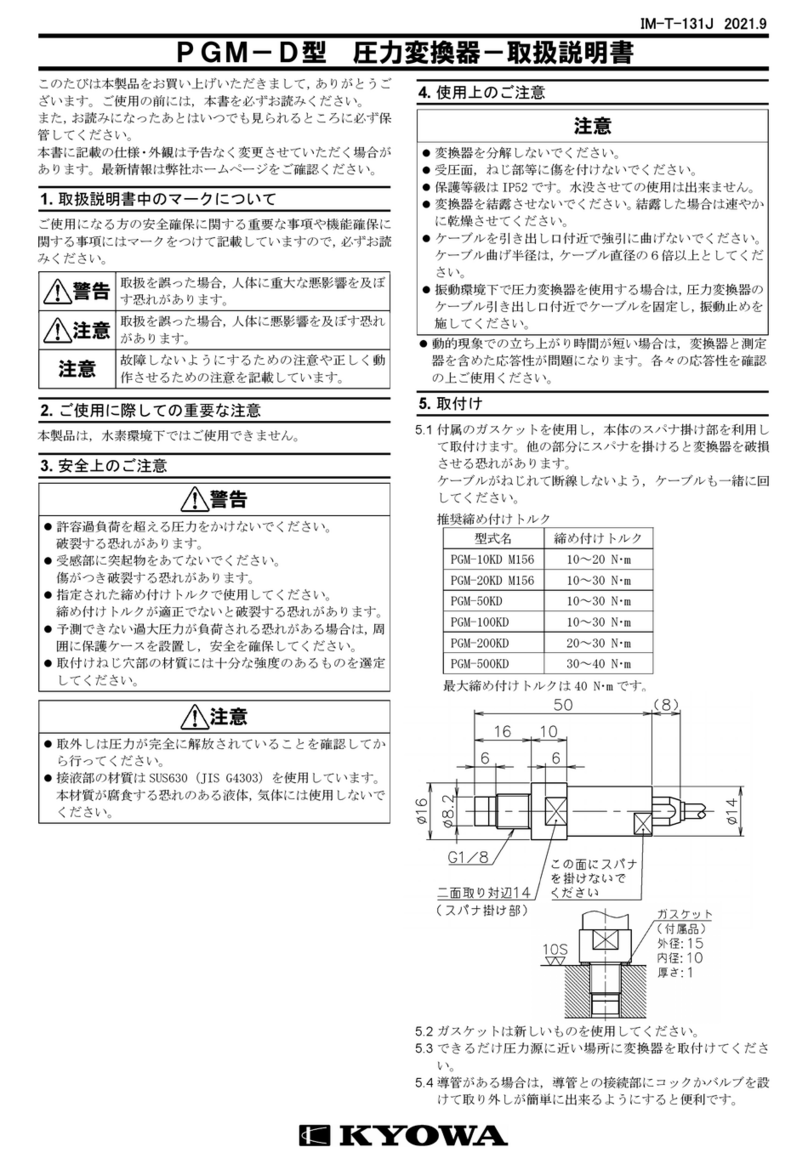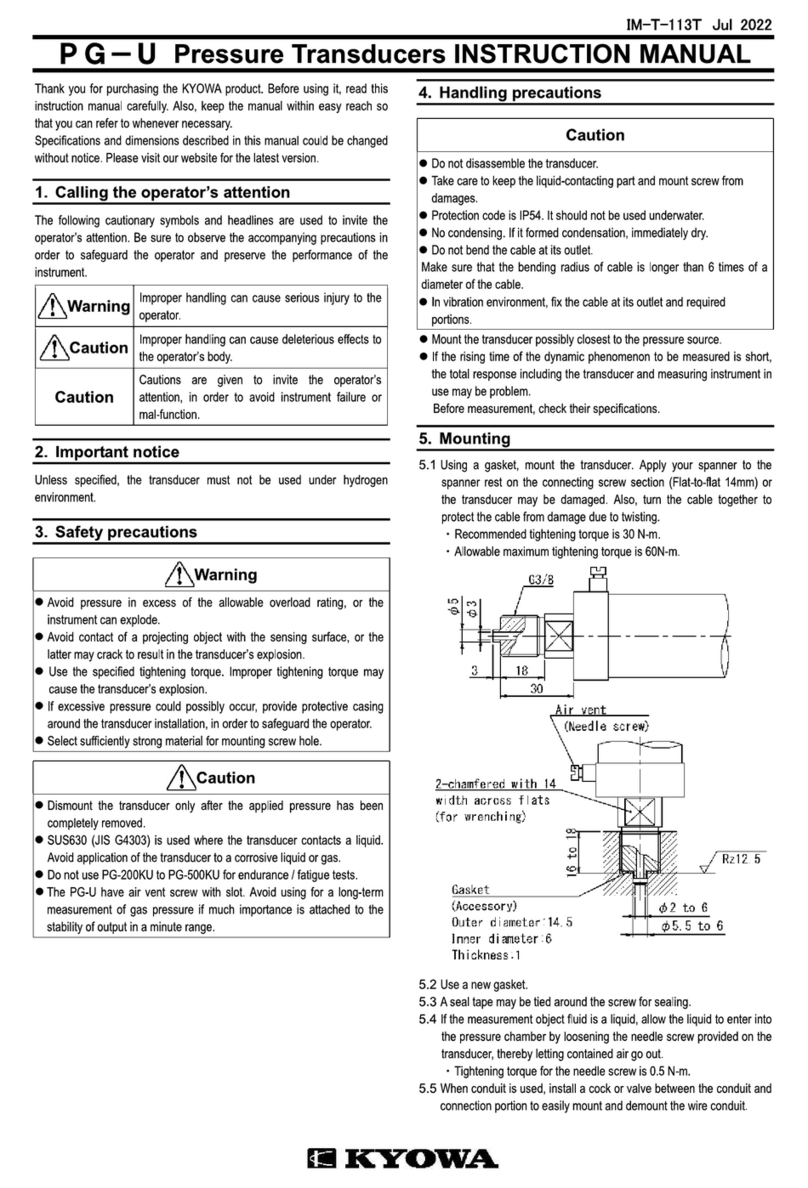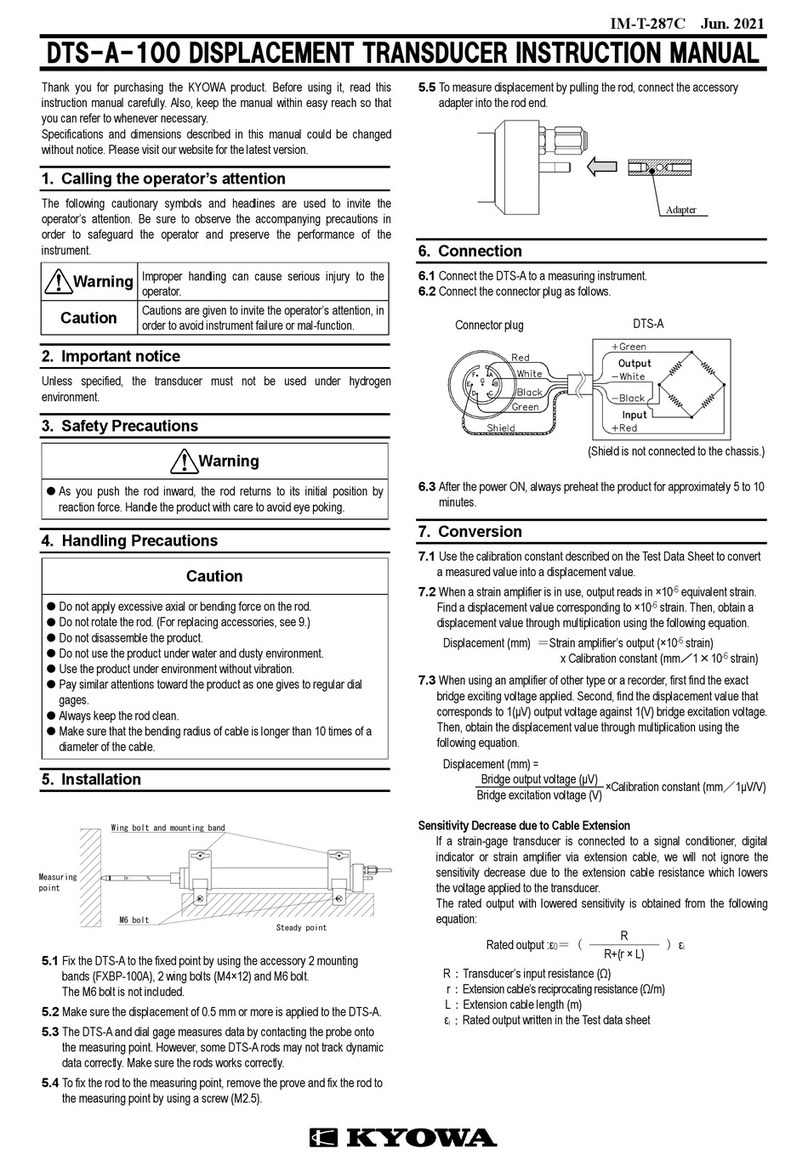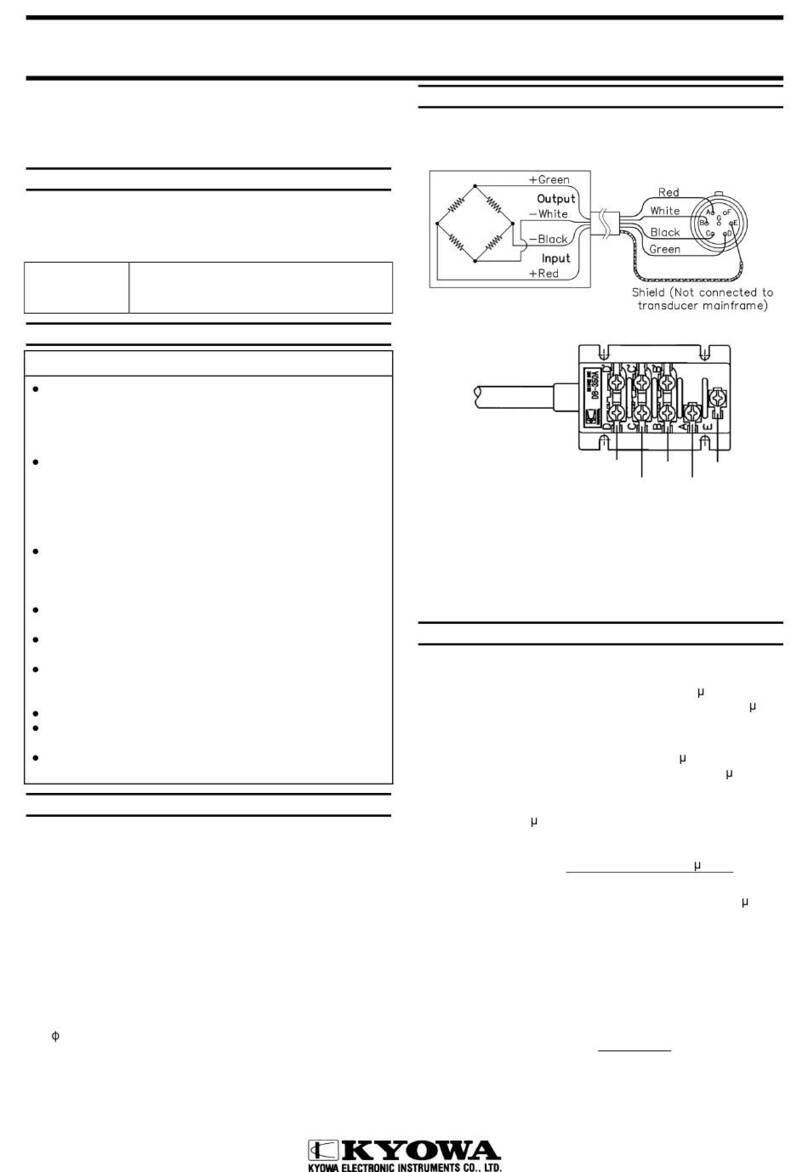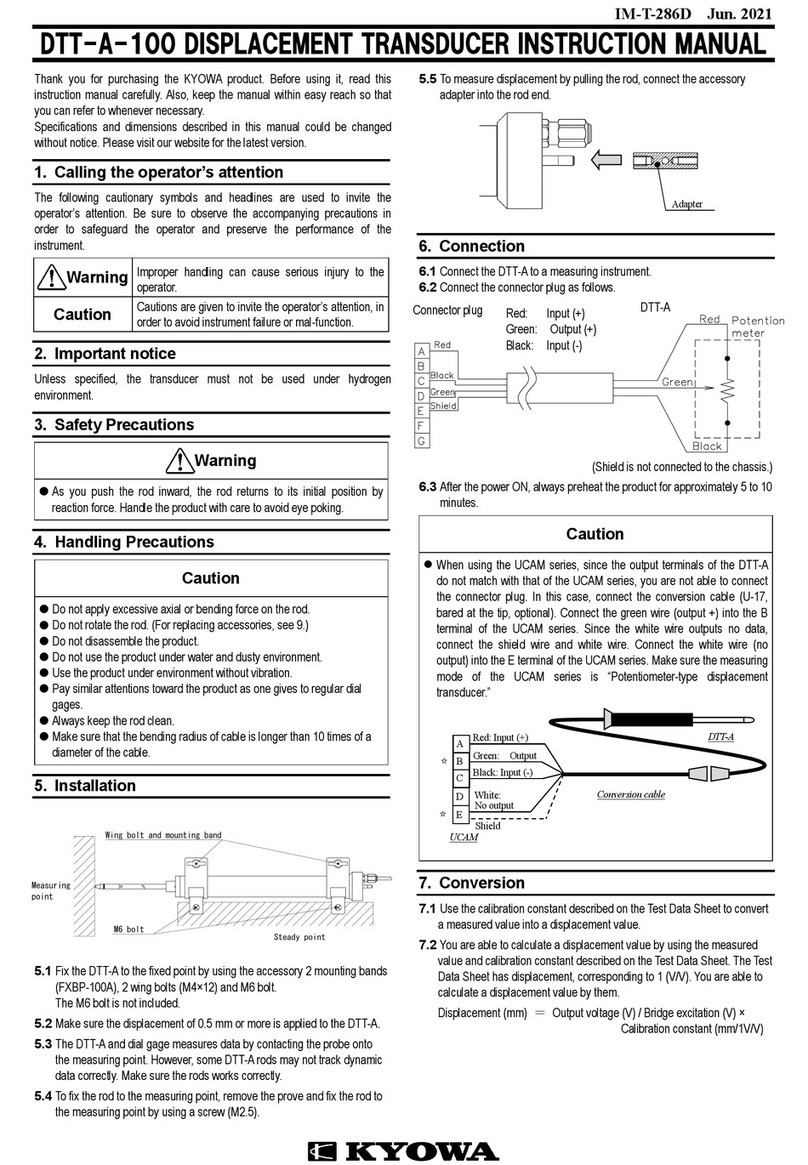
Website: https://www.kyowa-ei.com/
5. Dismounting
5.1 To dismount the ASH-A which was bonded with the adhesive, apply a solvent,
to the bonding area then leave it as it is for about 2 minutes. Next, apply the
tip of a screwdriver to the bonding position and softly push the screw-driver
grip up and down. If this does not work, apply the sol-vent anew and repeat
the same procedure.
Avoid forcible dismounting, or deterioration of the ASH-A characteristics or
breakdown may be caused.
6. Conversion
6.1 To convert output, use the calibration constant stated in the Test Data Sheet.
6.2 When a strain amplifier is used, a measurement value is read in ε×10-6 strain.
The acceleration is shown as follows using the reading value and the
calibration constant.
Acceleration (m/s2)
=Reading of strain amplifier (ε×10-6 strain)
×Calibration constant (m/s2/1×10-6 strain)
6.3 If you use an amplifier of other type, it is necessary to measure the applied
bridge excitation voltage accurately. The Test Data Sheet states the
acceleration value which corresponds to 1 μV output against 1 V bridge
voltage applied.
Acceleration(m/s2)= Bridge output voltage(μV)
Bridge excitation voltage(V)
×Calibration constant (m/s2/1μV/V)
Reference
The relation between acceleration vibration and amplitude is as follows.
Acceleration (m/s2)=a4π2f2
where,a:Amplitude (m)
f:Vibration (Hz)
7. Storing precautions and inspection
7.1 Avoid water, oil and dust on the connector.
7.2 After use, clean the transducer and store in the accessory case.
7.3 If the initial value and/or reading value are found abnormal, measure
input/output resistance and insulation resistance (which should be 100 MΩ).
If the measured values differ from the calibration sheet, the cause may be
failure of the sensing element. In this case, contact KYOWA or our
representatives.
Caution
To measure insulation resistance, apply a voltage lower than 50V DC to the
insulation resistance tester.
8. Specifications
Models Rated capacity
(Reference value)
Frequency Response
(At 23℃)
ASH-A-10 ±98.07 m/s2
(±10G)
DC to 500Hz
(Sensitivity deviation:±5%)
ASH-A-20 ±196.1 m/s2
(±20G)
DC to 650Hz
(Sensitivity deviation:±5%)
ASH-A-50 ±490.3 m/s2
(±50G)
DC to 1.5kHz
(Sensitivity deviation:±5%)
ASH-A-100 ±980.7 m/s2
(±100G)
DC to 2kHz
(Sensitivity deviation:±5%)
ASH-A-200 ±1961 m/s2
(±200G)
DC to 3.5kHz
(Sensitivity deviation:±5%)
ASH-A-500 ±4903 m/s2
(±500G)
DC to 5kHz
(Sensitivity deviation:±10%)
ASH-A-1K ±9807 m/s2
(±1000G)
DC to 7kHz
(Sensitivity deviation:±10%)
◆Performance
Rated Capacity :See table above.
Nonlinearity :Within ±1%RO
Hysteresis :Within ±1%RO
Rated Output :0.5 mV/V (1000×10-6 strain) ±25%
(ASH-A-10)
0.5 mV/V (1000×10-6 strain) ±20%
(ASH-A-20 to 1K)
◆Environmental Characteristics
Safe Temperature Range :-15 to 65℃
Compensated Temperature Range
:5 to 40℃
Temperature Effect on Zero Balance
:Within ±1%RO/℃
Temperature Effect on Output
:Within ±1%/℃
◆Electrical Characteristics
Safe Excitation voltage :6V AC or DC
Recommended Excitation voltage
:2V AC or DC
Input Resistance :120Ω±5% (ASH-A-10 to 50)
120Ω±8.3%(ASH-A-100 to 1K)
Output Resistance :120Ω±5% (ASH-A-10 to 50)
120Ω±8.3%(ASH-A-100 to 1K)
Cable :4-conductor(0.08mm2) vinyl shielded cable,
3.2mm diameter by 5m long, terminated with
connector plug (PRC03-12A10-7M)
(Shield wire is not connected to the case.)
◆Mechanical Properties
Safe Overload Rating :300 %
Frequency Response :See table above.
Transverse Sensitivity :2%RO or less
Weight :Approx. 13g (ASH-A-10 to 50)
(Excluding Cable) Approx. 6.5g (ASH-A-100 to 1K)
◆Accessories
Instruction manual :1 (This book)
Test data sheet :1


